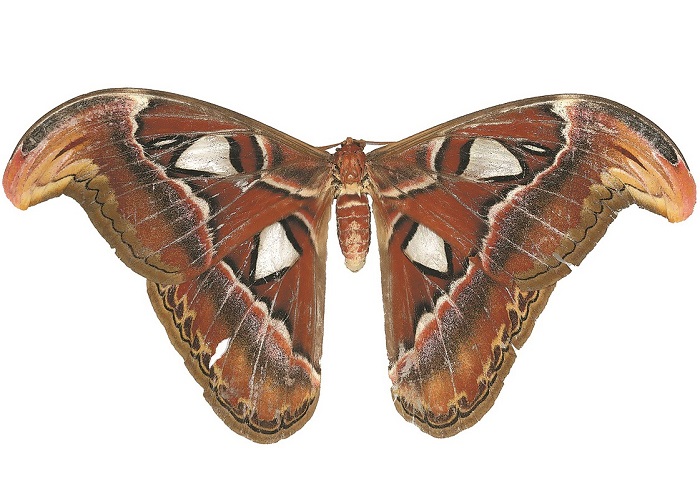Massive moth found in Guangxi

Attacus atlas, the world's largest moth
The world's largest moth, Attacus atlas, was found recently in Hezhou, a city in South China's Guangxi Zhuang autonomous region.
It was stumbled upon by a team of entomologists from Guangxi Normal University during an insect diversity survey in the city's Guangxi Daguishan Crocodile Lizard National Nature Reserve.
Professor Deng Wei'an, from the university's College of Life Sciences, said the moth had a wingspan of 23 centimeters, and the species was identified by lepidopterist Professor Jia Fenghai.
Deng said there are more than 150,000 species of moths worldwide, with over 7,000 species recorded in China and over 1,000 species in Guangxi.
"Guangxi has many distinctive moth species," Deng said.
"Although not as large, they are also very good, such as the long-tailed silk moth, and so on. Specific data has not been compiled by anyone."
Attacus atlas, commonly known as the Atlas moth, can have a wingspan of 30 centimeters and a wing area of nearly 400 square centimeters, featuring prominent triangular transparent regions on both forewings and hindwings.
Unique serpent-like patterns adorn the tips of the forewings, which are believed to serve as a deterrent to predators.
The Atlas moth predominantly inhabits a number of Southeast Asian countries and regions in China such as Guangxi and the provinces of Guangdong and Fujian. However, wild populations in China are scarce, leading to the inclusion of the Atlas moth in the country's list of terrestrial wildlife protected by the State.
As environmental degradation persists in many regions, the wild population of the Atlas moth continues to dwindle.
The Guangxi Daguishan nature reserve was established in April 2005 and elevated to a national nature reserve in 2013.














